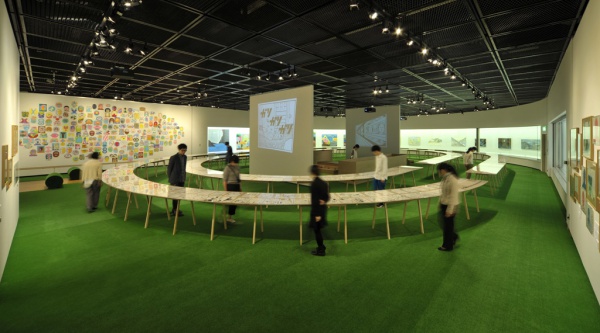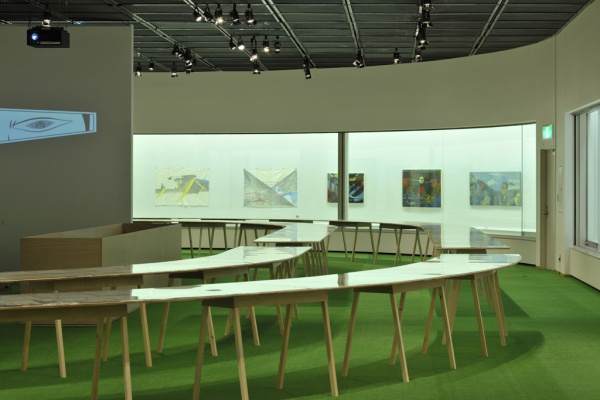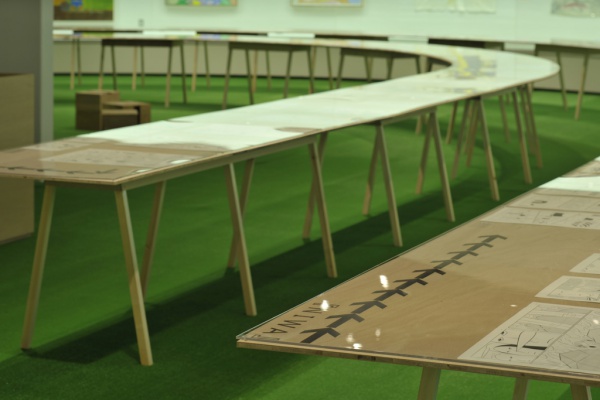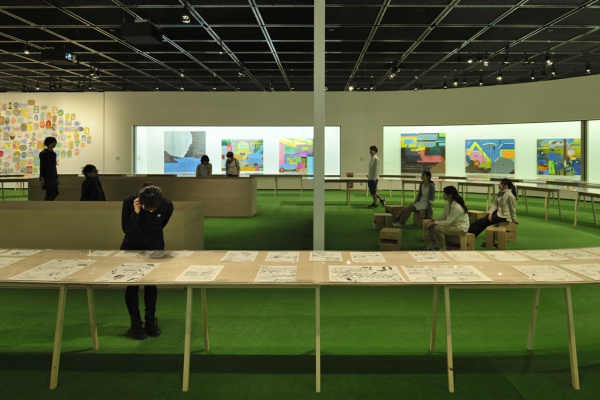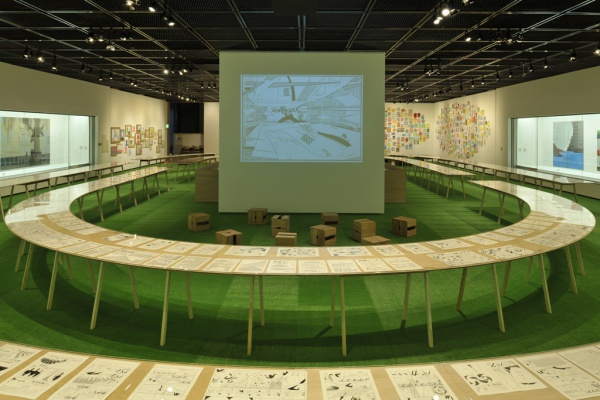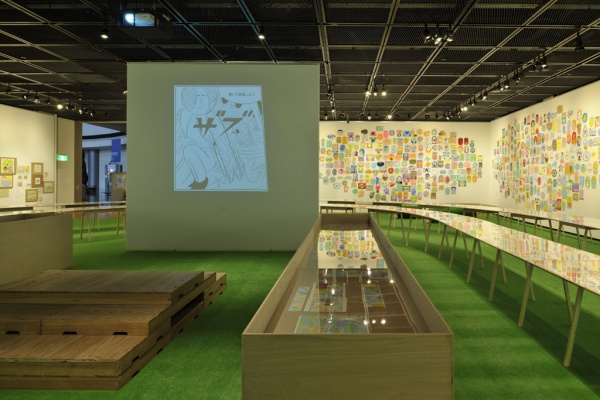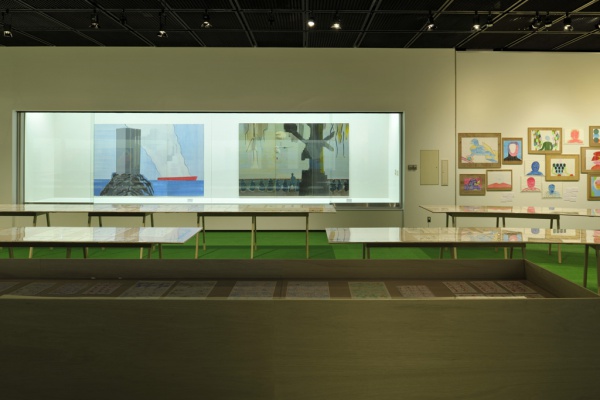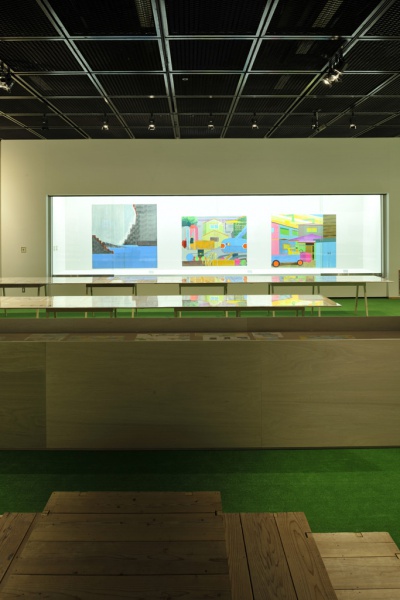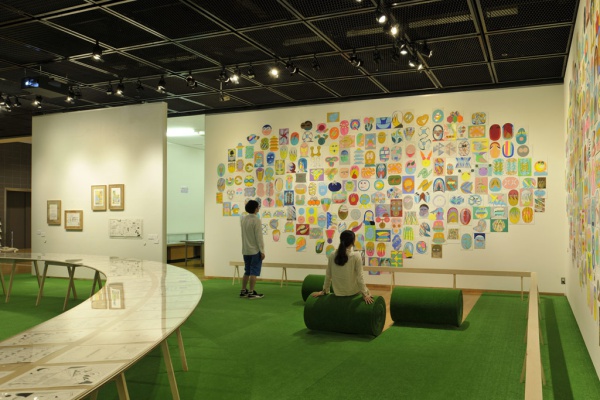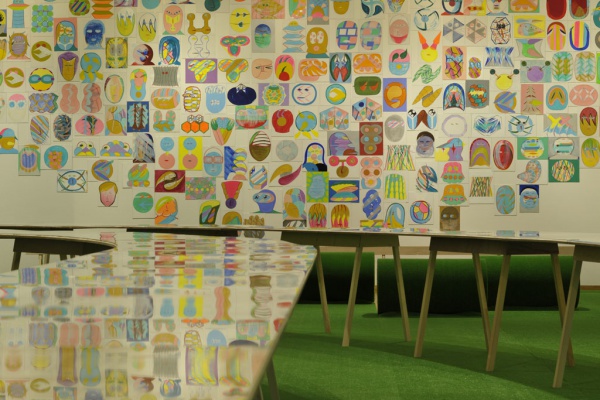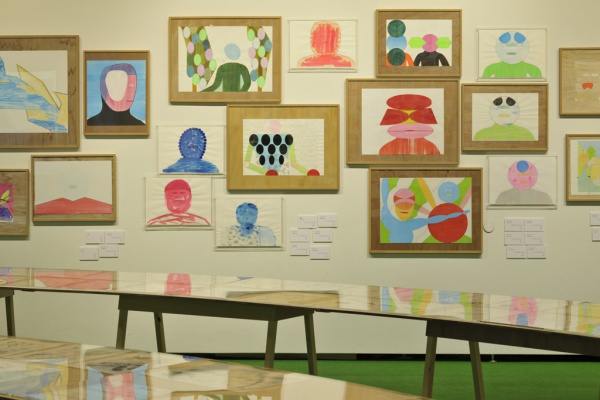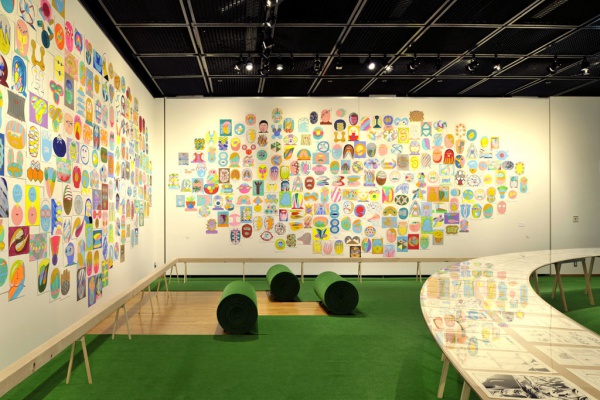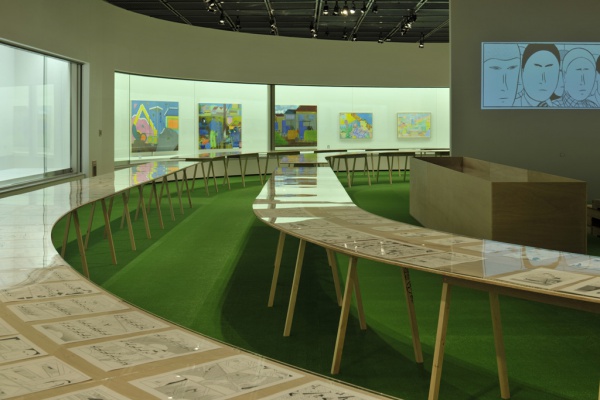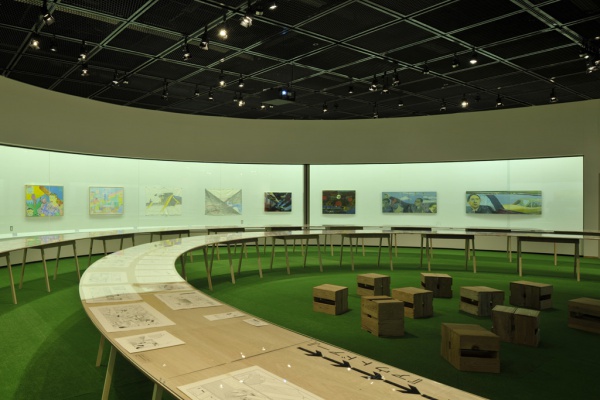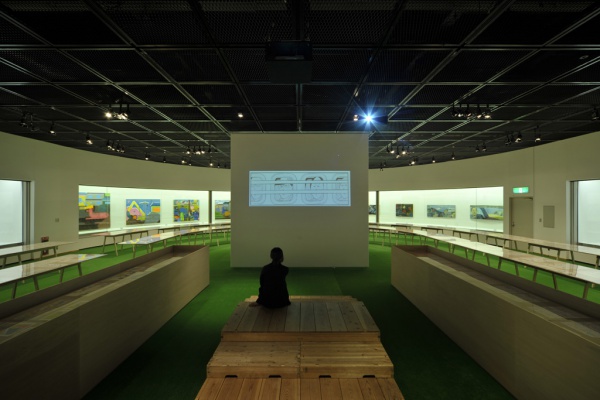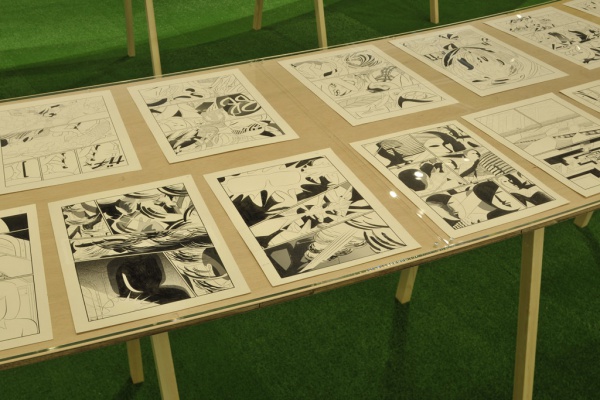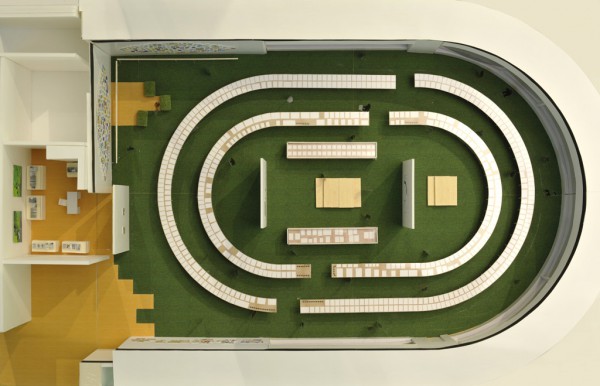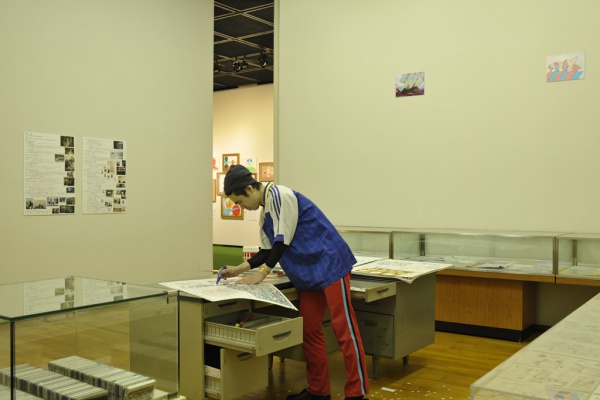主要用途: 展示会場構成
施工: 東京スタデオ
所在・会場: 川崎市市民ミュージアム
延床面積: 582.1m2
設計期間: 2010.01-04
施工期間: 2010.04
会期: 2010.04.24-06.20
写真: 太田拓実
川崎市市民ミュージアムで行われた『横山裕一 ネオ漫画の全記録:「わたしは時間を描いている」』の会場構成。絵画を学んだのち、漫画を表現手段に独創的な作品を生み出している新進漫画家横山裕一の大規模な初の個展である。
会場は仕切りのない約600㎡の空間で、初期の絵画作品と漫画作品の代表作である『ニュー土木』『トラベル』『NIWA』の膨大な量の原画すべてを、順に鑑賞できる会場構成を求められた。
そこで、このミュージアムの特徴的な曲面壁を活かし、陸上競技のトラックのような形状の展示台による平面計画とした。展示台の外周、内周で展示作品を分け、ページを順に追いながらトラックを周回する。漫画は右から左に読んでいくため、展示台の外周と内周で人の動く方向が逆向きとなり、対向する鑑賞者は一度だけ対面する。この逆行する動線が展示台を共有する鑑賞者同士の距離感を保つ。半強制的な動線でありながら、順路の単純化と選択的な動きが許容できることを目指した。
床全面に敷いた人工芝は、『NIWA』などに表現される人工的な自然観に共鳴する。その人工芝の床面は歩くたびに「ザッザッ」という乾いた音を発し、作中で多用される擬音を具現化している。中央の映像観賞用のベンチにおいてもミュージアム所有の積枠や木箱を利用し、作中の土木的な構造物を思わせる。
ページを追って鑑賞者がぞろぞろと行進する風景や、作中の人工的で工業的なシーンから抜け出してきたような家具など、会場全体の印象が横山裕一の世界観と呼応する空間を目指した。
Principle use: EXHIBITION SITE
Production: TOKYO STUDIO
Building site: KAWASAKI CITY MUSEUM
Total floor area: 582.1m2
Design period: 2010.01-04
Construction period: 2010.04
Duration: 2010.04.24-06.20
Photo: Takumi Ota
Presented at the KAWASAKI CITY MUSEUM , “Yokoyama Yuichi - A complete record of Neo Manga: ‘I am Depicting Time.’” is Yuichi Yokoyama’s first exhibition, an up-and-coming artist with a painting background that discovered manga as a form of expression to create original works of art.
The site features an unpartitioned area covering 600㎡ where visitors can appreciate his early art works alongside a whole vast collection of story-boards from his most representative manga; New Engineering, Travel and NIWA.The museum’s characteristic curved wall inspired us a track-and-field-like exhibition space where visitors complete laps by following the drawings placed
along the inner and outer rings. Japanese manga reads from right to left, conducting visitors on the inside to move in the opposite direction to those on the outside. This setting brings them to share the same displays while ensuring they move pass each other once, thus maintaining a feeling
of distance. The semi-directive line of flow allows for a simplified route and selective movement to coexist on the same track.
The artificial lawn covering the exhibition floor accompanied by the dry brushing sound footsteps resonates with the perspective on nature and sound-effects expressed in NIWA. Facing the screen at the center are benches made out of wooden crates and transport pallets owned by the museum reminding of engineering structures.
By using furniture with an artificial and industrial feel straight out of the artist’s manga and having visitors move in succession through its pages, we strived to create a space exuding an overall impression attuned to Yuichi Yokoyama’s vision.
